Conway's Game Of Life 01
simple version of the code
http://makeyourownalgorithmicart.blogspot.co.uk/2018/05/artificial-life-and-conways-game-of-life.html
- mySketch
xxxxxxxxxx/* Game of Life 1 - simple code example Rules from wikipedia: https://en.wikipedia.org/wiki/Conway%27s_Game_of_Life Article disusssing artificial life and conway's game of life: http://makeyourownalgorithmicart.blogspot.co.uk/2018/05/artificial-life-and-conways-game-of-life.html*/// create cellsvar number_of_rows = 50;var number_of_columns = 50;var grid_array = [];// cell size on screencell_size = 10;function setup() { createCanvas(800, 600); background('white'); //noLoop(); stroke(200); // slow down the calling of draw() so we can see the patterns evolve frameRate(20); // border noFill(); rect(0,0, width-1, height-1); // populate grid randomly for (var j = 0; j < number_of_rows; j += 1) { for (var i = 0; i < number_of_columns; i += 1) { // convert (i,j) to position in array var index = i + (j * number_of_columns); // set cell value to either 0 or 1, but mostly 0 grid_array[index] = 0; if (random() < 0.3) { grid_array[index] = 1; } // test shapes // //grid_array[1 + (3*number_of_columns)] = 1; //grid_array[2 + (3*number_of_columns)] = 1; //grid_array[3 + (3*number_of_columns)] = 1; //grid_array[2 + (2*number_of_columns)] = 1; } } }function draw() { // move origin so grid is centres translate((width - (number_of_columns * cell_size))/2, (height - (number_of_rows * cell_size))/2); // draw grid for (var j = 0; j < number_of_rows; j += 1) { for (var i = 0; i < number_of_columns; i += 1) { // convert (i,j) to position in array var index = i + (j * number_of_columns); // get current value and draw cell var cell_value = grid_array[index]; fill((1-cell_value) * 255); rect(i*cell_size, j*cell_size, cell_size, cell_size); } } // initialise new temporary array var grid_array_2 = []; for (var j = 0; j < number_of_rows; j += 1) { for (var i = 0; i < number_of_columns; i += 1) { // convert (i,j) to position in array var index = i + (j * number_of_columns); grid_array_2[index] = 0; } } // update grid for (var j = 0; j < number_of_rows; j += 1) { for (var i = 0; i < number_of_columns; i += 1) { // get number of neighbours var neighbours = 0; // look at immediate neighbourhood for (y = -1; y <= 1; y +=1 ){ for (x = -1; x <= 1; x +=1 ){ // wrap coordinates around var wrapped_i = (i + x + number_of_rows) % number_of_rows; var wrapped_j = (j + y + number_of_columns) % number_of_columns; // don't include current cell, only neighbours if (!(x == 0 && y == 0)) { // convert (i,j) to position in array var index = (wrapped_i) + (wrapped_j * number_of_columns); neighbours += grid_array[index]; } } } // apply rules // convert (i,j) to position in array var index = i + (j * number_of_columns); // Rule 1. Any live cell with fewer than two live neighbors dies, as if caused by under population. if (grid_array[index] == 1 && neighbours < 2) { grid_array_2[index] = 0; } // Rule 2. Any live cell with two or three live neighbors lives on to the next generation. if (grid_array[index] == 1 && (neighbours == 2 || neighbours == 3)) { grid_array_2[index] = 1; } // Rule 3. Any live cell with more than three live neighbors dies, as if by overpopulation. if (grid_array[index] == 1 && neighbours > 3) { grid_array_2[index] = 0; } // Rule 4. Any dead cell with exactly three live neighbors becomes a live cell, as if by reproduction. if (grid_array[index] == 0 && neighbours == 3) { grid_array_2[index] = 1; } } } // point grid_array to new array, old one should be garbage collected grid_array = grid_array_2; }- v1.11.3
- v1.11.2
- v1.11.1
- v1.11.0
- v1.10.0
- v1.9.4
- v1.9.3
- v1.9.2
- v1.9.1
- v1.9.0
- v1.8.0
- v1.7.0
- v1.6.0
- v1.5.0
- v1.4.2
- v1.4.1
- v1.4.0
- v1.3.1
- v1.3.0
- v1.2.0
- v1.1.9
- v1.1.7
- v1.1.5
- v1.1.4
- v1.1.3
- v1.0.0
- v0.10.2
- v0.9.0
- v0.8.0
- v0.7.3
- v0.7.2
- v0.6.1
- v0.6.0
- v0.5.16
- v0.5.11
- v0.5.8
- v0.5.7
- v0.5.2
Select mode or a template
Centers sketch and matches the background color.
This will be the default layout for your sketches
Easy on the eyes
It will show up when there is an error or print() in code
Potential warnings will be displayed as you type
Closes parenthesis-like characters automatically as you type
Controls
Play
Ctrl+Enter
Code
Ctrl+Shift+Enter
Save
Ctrl+S
Interface
Fullscreen
Ctrl+Alt+F
Switch Layout
Ctrl+Alt+L
Settings
Ctrl+Alt+.
Editor
Tidy Code
Ctrl+B
Multiple Cursors
Ctrl+Click
Duplicate Line/Selection
Ctrl+Shift+D
Move Line
Alt+↑/↓
Select Multiple
Ctrl+D
Find in Code
Ctrl+F
Find Next
Ctrl+G
Find Previous
Ctrl+Shift+G


